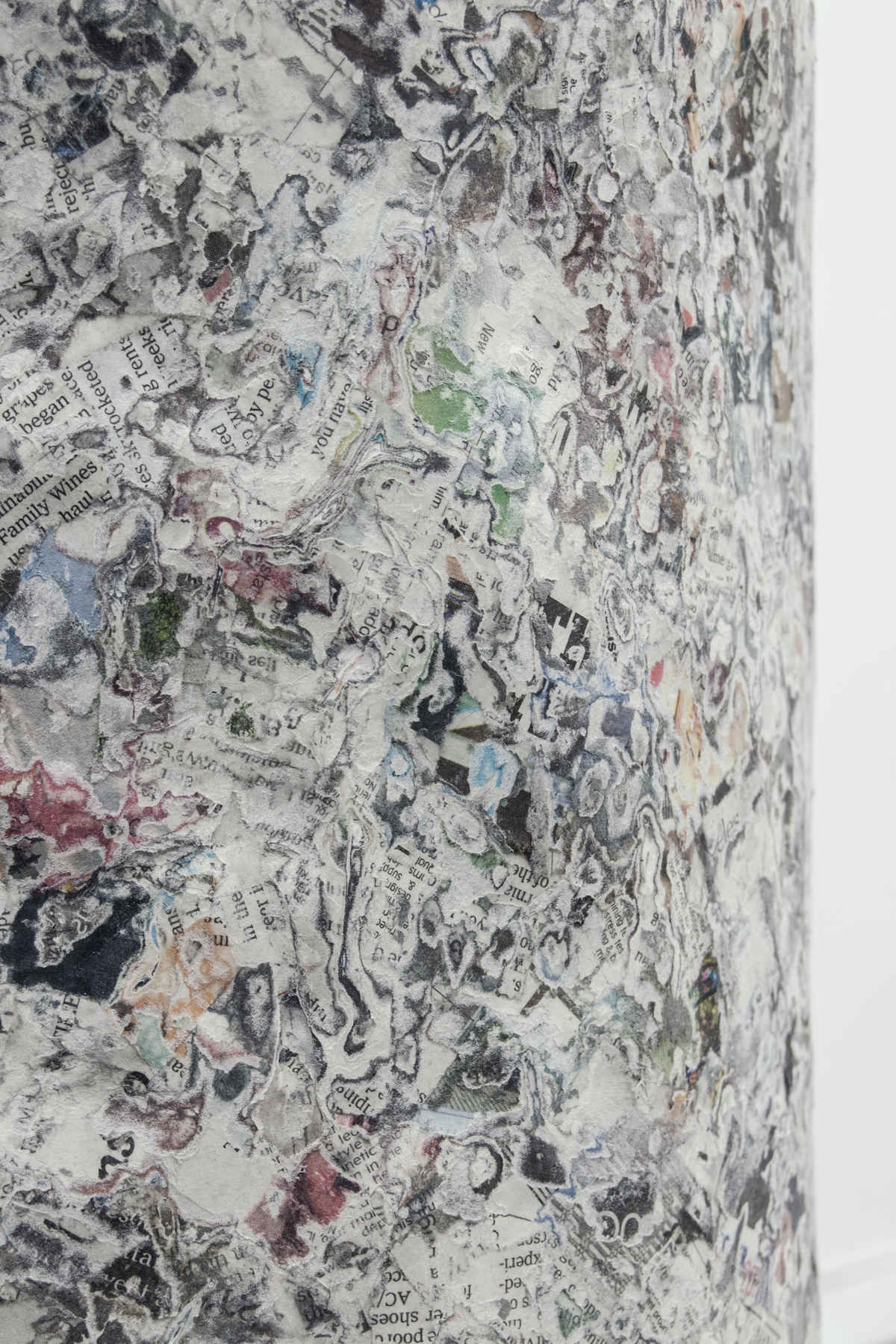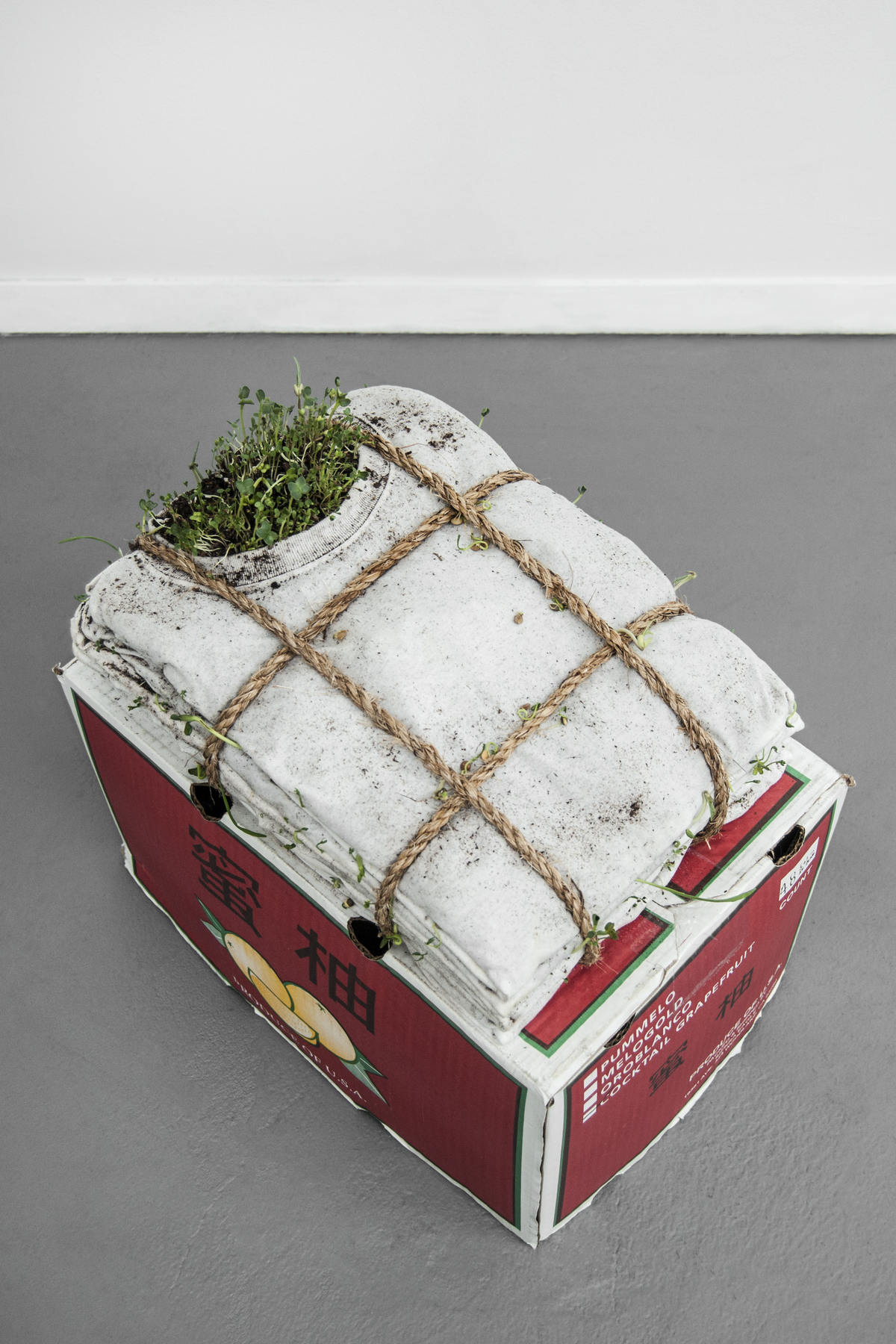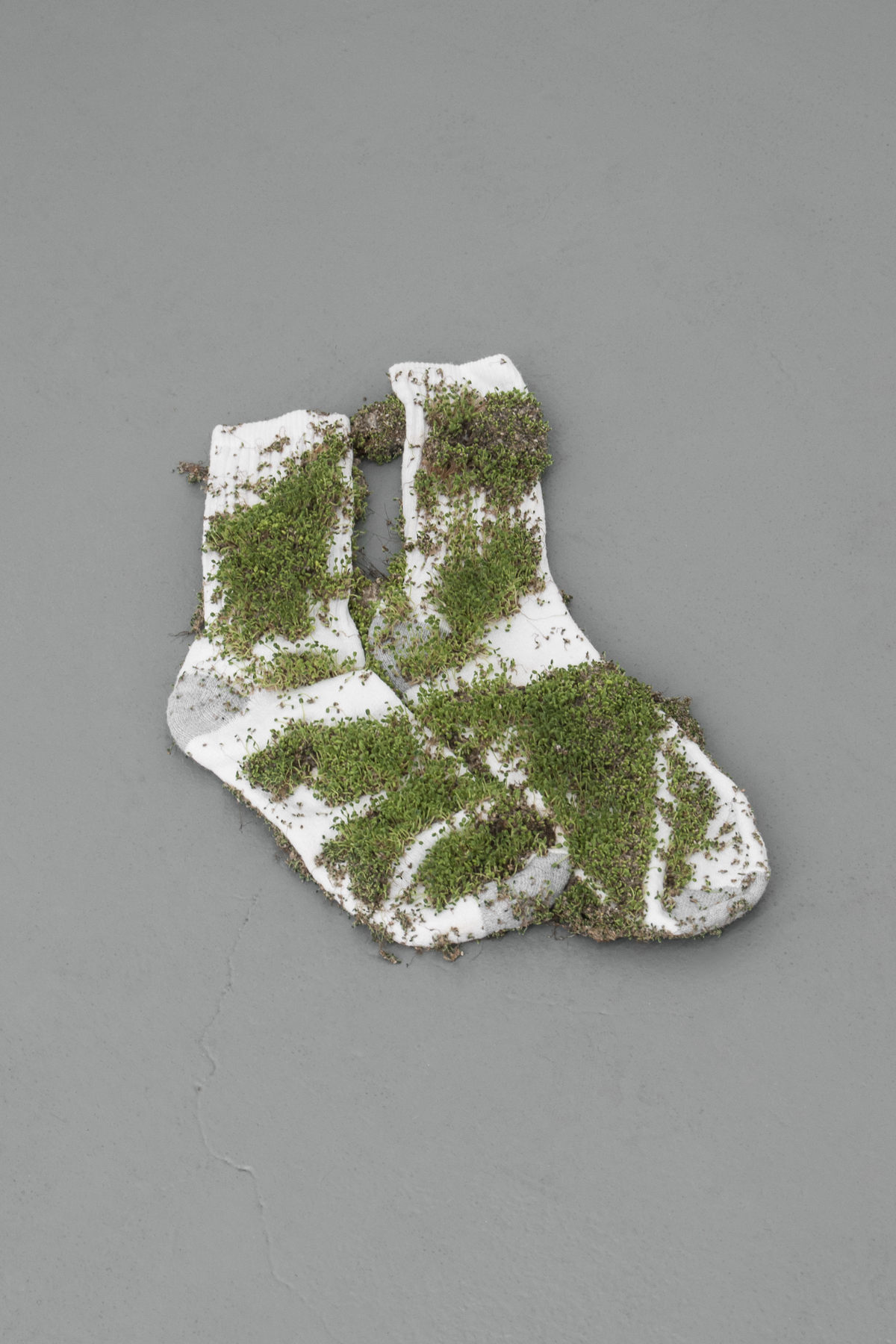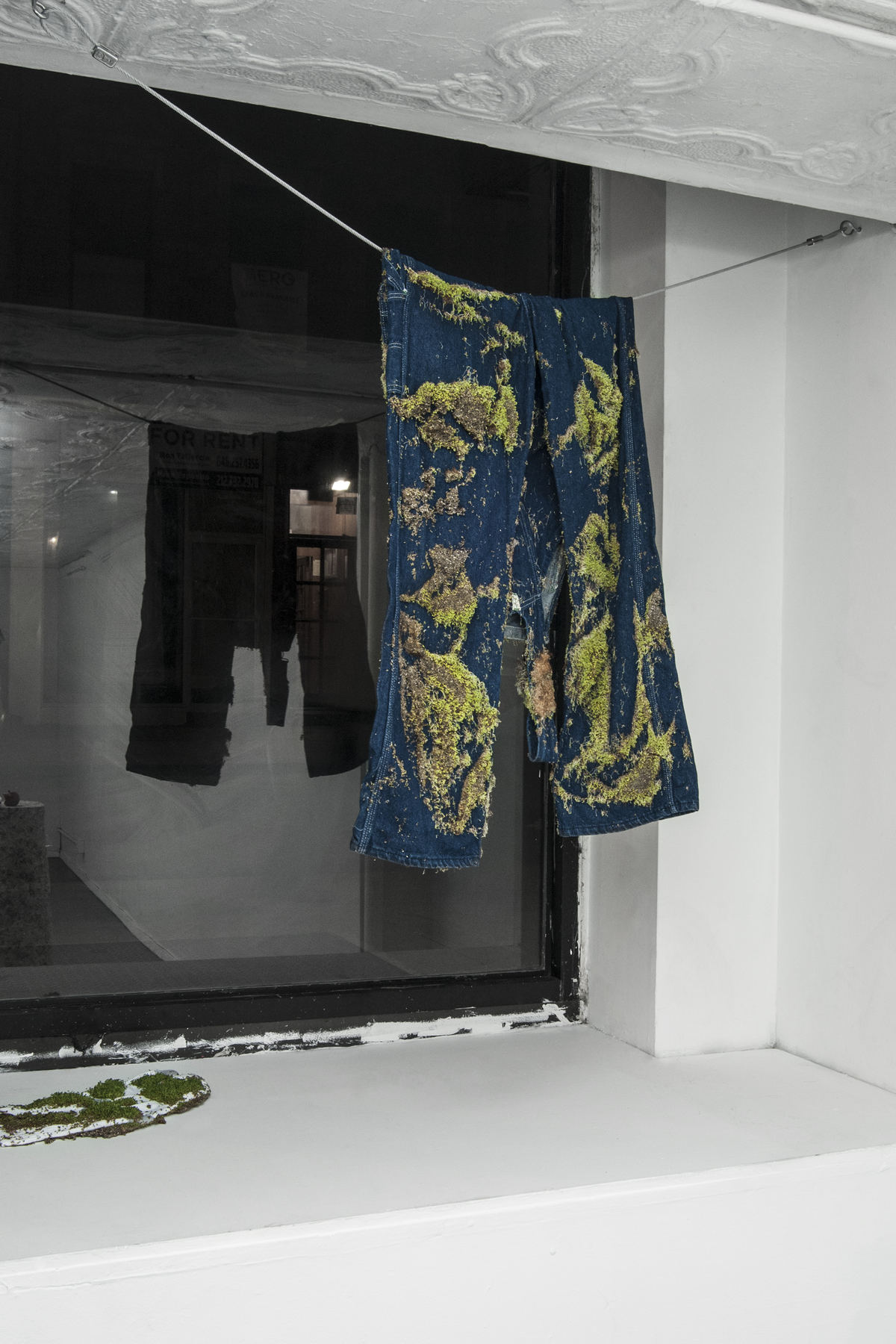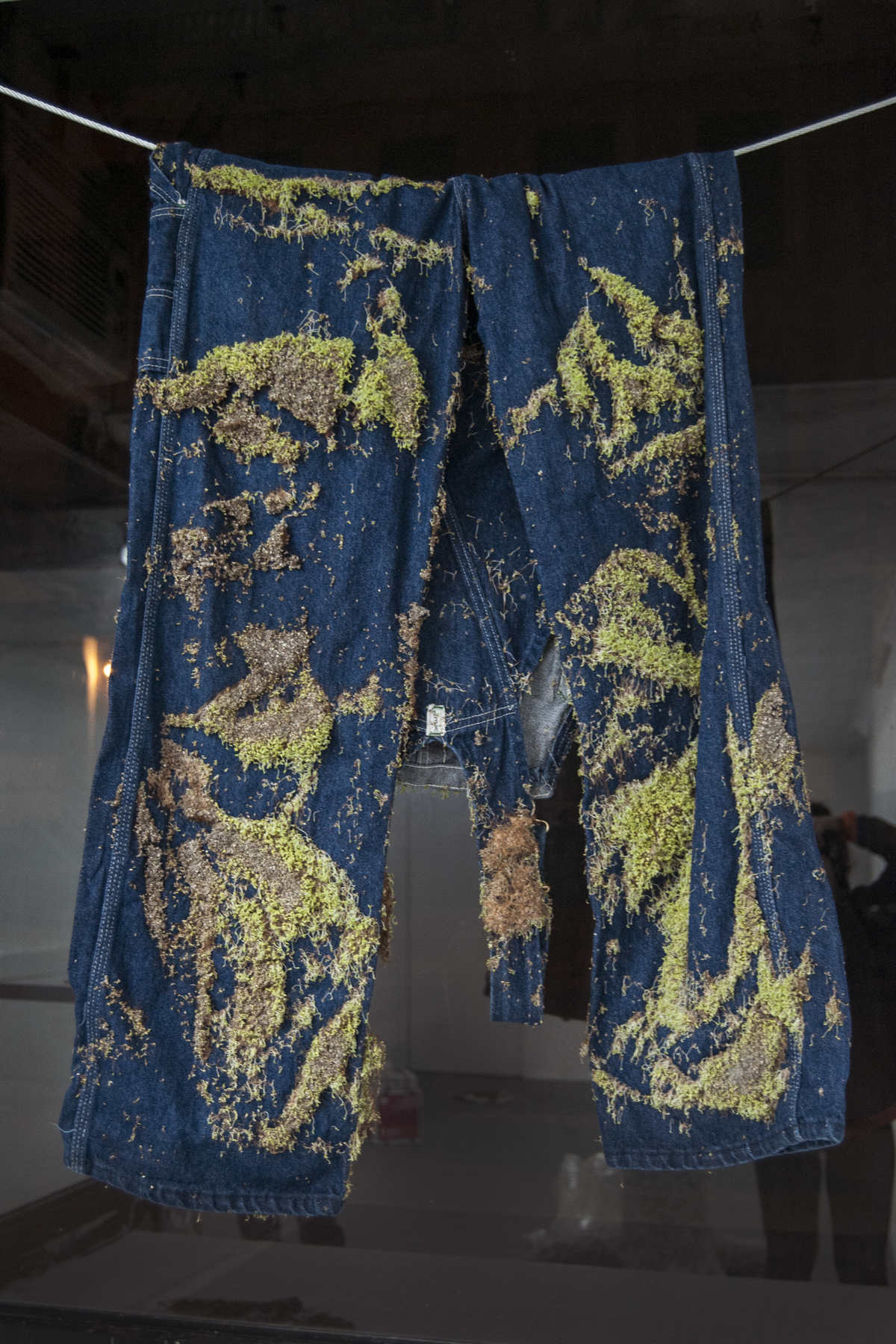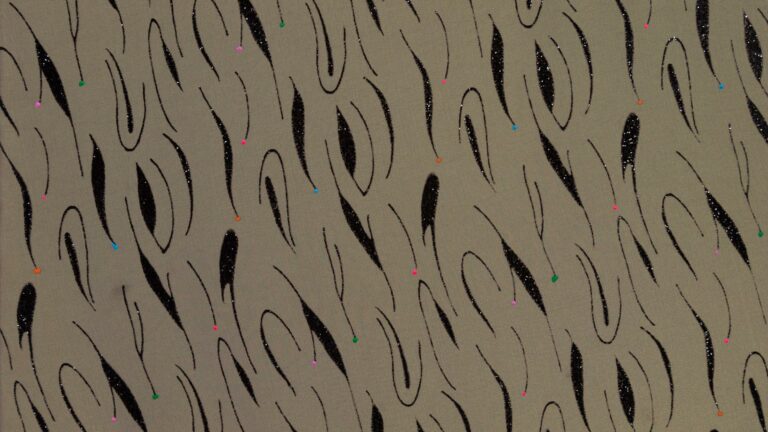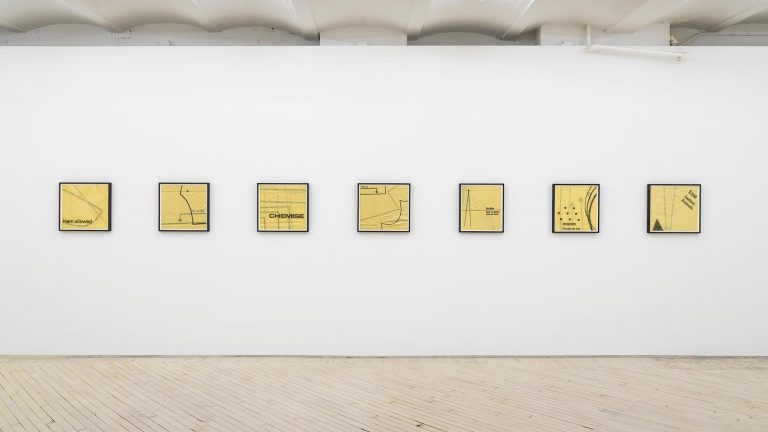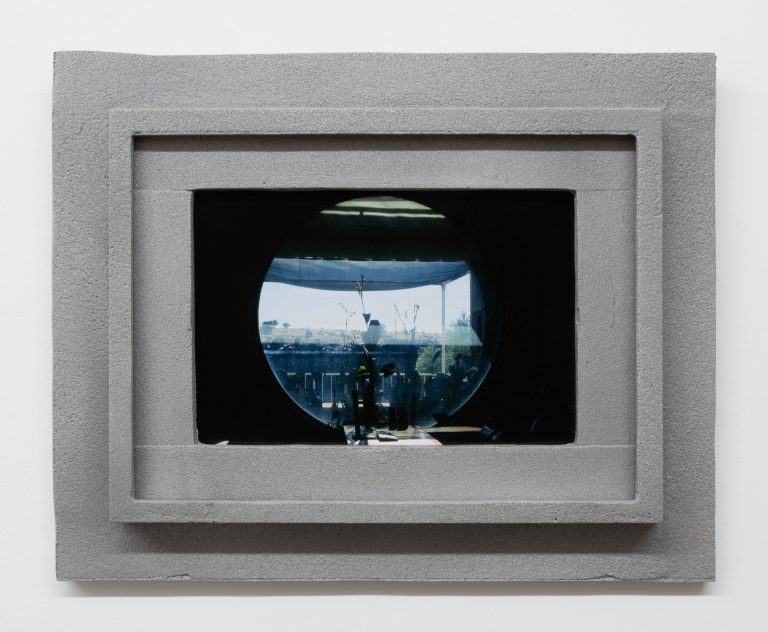Artist: Bea Fremderman
Exhibition title: How to Do Nothing with Nobody All Alone by Yourself
Venue: Shoot the Lobster, New York, US
Date: February 2 – February 26, 2017
Photography: all images copyright and courtesy of the artist and Martos Gallery
The apocalypse is part of our ideological baggage. It is aphrodisiac, nightmare, a commodity like any other. You can call it a metaphor for the collapse of capitalism, which as we all known has been imminent for more than a century. We come up against it in the most varied shapes and guises: as warning finger and scientific forecast, collective fiction and sectarian rallying cry, as product of the leisure industry, as superstition, as vulgar mythology, as a riddle, a kick, a joke, a projection. It is ever present but never ‘actual’: a second reality, an image that we construct for ourselves, an incessant product of our fantasy, the catastrophe in the mind.
All this it is and more, as one of the oldest ideas in the human species. Thick volumes could have been written on its origins, and of course such volumes have actually been written. We know likewise all manner of things about its chequered history, about its periodic ebb and flow, and the way these fluctuations connect with the material process of history. The idea of the apocalypse has accompanied utopian thought since its first beginnings, pursuing it like a shadow, like a reverse side that cannot be left behind: without catastrophe, no millennium, without apocalypse, no
paradise. The idea of the end of the world is simply a negative utopia.
But even the end of the world is no longer what it was. The film playing in our heads, and still more uninhibitedly in our unconscious, is distinct in many respects from the dream of old. In its traditional coining, the apocalypse was a venerable, indeed a sacred idea. But the catastrophe which we are so concerned with (or rather haunted by) is entirely secularized phenomenon. We read its signs on the walls of buildings, where they appear overnight, clumsily sprayed; we read them on the printouts spewed forth by the computer. Our seven-headed monster answers to many names: police state, paranoia, bureaucracy, terror, economic crisis, arms race, destruction of the environment. Its four riders look like the heroes of Westerners and sell cigarettes, while the trumpets that proclaim the end of the world serve as theme music for a commercial break. Once people saw in the apocalypse the unknowable avenging hand of God. Today it appears as the methodically calculated product of our own actions, and the spirits whom we hold responsible for its approach we call reds, oil sheikhs, terrorists, multinationals; the gnomes of Zurich and the Frankensteins of the biology labs; UFOs and neutron bombs; demons from the Kremlin or the Pentagon: an underworld of unimaginable conspiracies and machinations whose strings are pulled by the all-powerful cretins of the secret police.
The apocalypse was also once a singular event, to be expected unannounced as a bolt from the blue: an unthinkable moment that only seers and prophets could anticipate – and, of course, no one wanted to listen to their warnings and predictions. Our end of the world, on the other hand, is sung from the rooftops even by the sparrows; the element of surprise is missing; it seems only to be a question of time. The doom we picture for ourselves is insidious and agonizingly slow in its approach, the apocalypse in slow motion. It is reminiscent of that hoary avant-garde classic of the silent cinema in which we see a gigantic factory chimney crack up and collapse noiselessly on the screen, for a full twenty minutes, while the spectators, in a kind of indolent comfort, lean back in their threadbare velvet seats and nibble their popcorn and peanuts. After the performance the futurologist mounts the stage. He looks like a poor imitation of Dr. Strangelove, the mad scientist, only he is repulsively fat. Quite calmly he informs us that the atmospheric ozone layer will have disappeared in twenty years’ time, so that we shall surely be toasted by cosmic radiation if we are lucky enough to survive until then; unknown substances in our milk are driving us to psychosis; and with the rate at which world population is growing there will soon be standing room only on our planet. All this with Havana cigar in hand, in a well composed speech of impeccable logic. The audience suppresses a yawn, even though, according to the professor, imminent disaster looms ahead. But it’s not going to come this afternoon. This afternoon, everything will go on just as before, perhaps a little bit worse than last week, but not so that anyone would notice. If one of other of us should be a little depressed this afternoon, which cannot of course be ruled out, then the thought might strike him, irrespective of whether he works in the Pentagon or the underground, irons shirts or welds sheet metal, that it would really be simpler if we were rid of the problem once and for all; if the catastrophe really did come. However, this is out of the question. Finality, which was formerly one of the major attributes of the apocalypse, and one of the reasons for its power of attraction, is no longer granted us.
We have also lost another traditional aspect of the end of the world. Previously, it as generally agreed that the event would affect everyone simultaneously and without exception: the never-satisfied demand for equality and justice found in this conception its last refuge. But as we see it today, doom is no longer a leveler, quite the opposite. It differs from country to country, from class to class, from place to place. While it is already overtaking some, others can watch it on television. Bunkers are built, ghettos walled in, fortresses erected, bodyguards hired, on a large scale as well as small. Corresponding to the country house with burglar alarms and electronic fences, we have whole countries, on the international scale, who fence themselves in while others go to ruin. The nightmare of the end of the world does not end this temporal disparity, it simply radicalizes it. […] At this point, finally, the joke comes to an end.
Words by Hans Magnus Enzensberger, translated by David Fernbach and first published in New Left Review 110, July – August 1978.
Born in Kishinev, Moldova, Bea finished her studies at The School of the Art Institute in Chicago. Her current research interests are the economic impacts of climate change, apocalyptic survival tactics, feelings of global dread and false notions of freedom. Fremderman’s work combines parts and segments of a Capitalist reality as a reflection of daily life that has slipped away from society’s consciousness. Fremderman’s work has been exhibited in Mexico and Canada, and throughout the United States and Europe. Exhibition highlights include Inflected Objects #2 Circulation – Otherwise, Unhinged at Future Gallery in Berlin, Machine in the Garden at Springsteen Gallery in Baltimore, Solastalgia at Born Nude Gallery in Chicago, Office Space at Yerba Buena Center for the Arts in San Francisco, Hindsight is 20/20 at Aran Cravey Gallery in Los Angeles and Younger Than Jesus at the New Museum in New York. She currently lives and produces in New York City.
Bea Fremderman, Evan, 2017, Packaging tape, self-stick valve, newspaper, chicken wire, 35 x 64 x 43 inches (88.90 x 162.56 x 109.22 cm)
Bea Fremderman, Evan, 2017, Packaging tape, self-stick valve, newspaper, chicken wire, 35 x 64 x 43 inches (88.90 x 162.56 x 109.22 cm)
Bea Fremderman, Evan, 2017, Packaging tape, self-stick valve, newspaper, chicken wire, 35 x 64 x 43 inches (88.90 x 162.56 x 109.22 cm)
Bea Fremderman, Evan, 2017, Packaging tape, self-stick valve, newspaper, chicken wire, 35 x 64 x 43 inches (88.90 x 162.56 x 109.22 cm)
Bea Fremderman, Evan, 2017, Packaging tape, self-stick valve, newspaper, chicken wire, 35 x 64 x 43 inches (88.90 x 162.56 x 109.22 cm)
Bea Fremderman, Untitled (sweatshirt, shirt, jeans), 2017, Sprouts on clothing, 120 x 24 inches (304.80 x 60.96 cm)
Bea Fremderman, Untitled (sweatshirt, shirt, jeans), 2017, Sprouts on clothing, 120 x 24 inches (304.80 x 60.96 cm)
Bea Fremderman, Untitled (sweatshirt, shirt, jeans), 2017, Sprouts on clothing, 120 x 24 inches (304.80 x 60.96 cm)
Bea Fremderman, Untitled (sweatshirt, shirt, jeans), 2017, Sprouts on clothing, 120 x 24 inches (304.80 x 60.96 cm)
Bea Fremderman, Untitled (sweatshirt, shirt, jeans), 2017, Sprouts on clothing, 120 x 24 inches (304.80 x 60.96 cm)
Bea Fremderman, Untitled (sweatshirt, shirt, jeans), 2017, Sprouts on clothing, 120 x 24 inches (304.80 x 60.96 cm)
Bea Fremderman, Untitled, 2017, Sprouts on folded shirts, 4 x 11 x 14 inches (10.16 x 27.94 x 35.56 cm)
Bea Fremderman, Untitled, 2017, Sprouts on folded shirts, 4 x 11 x 14 inches (10.16 x 27.94 x 35.56 cm)
Bea Fremderman, Untitled, 2017, Sprouts on folded shirts, 4 x 11 x 14 inches (10.16 x 27.94 x 35.56 cm)
Bea Fremderman, Untitled, 2017, Sprouts on folded shirts, 4 x 11 x 14 inches (10.16 x 27.94 x 35.56 cm)
Bea Fremderman, Untitled, 2017, Sprouts on folded shirts, 4 x 11 x 14 inches (10.16 x 27.94 x 35.56 cm)
Bea Fremderman, Birdhouse, 2017, Mens shoe, size 14, 12 x 4.5 x 4 inches (30.48 x 11.43 x 10.16 cm)
Bea Fremderman, Birdhouse, 2017, Mens shoe, size 14, 12 x 4.5 x 4 inches (30.48 x 11.43 x 10.16 cm)
Bea Fremderman, Birdhouse, 2017, Mens shoe, size 14, 12 x 4.5 x 4 inches (30.48 x 11.43 x 10.16 cm)
Bea Fremderman, Untitled, 2017, Sprouts on socks, 16 x 9 inches (40.64 x 22.86 cm), Edition of 10
Bea Fremderman, Untitled, 2017, Sprouts on underwear, 16 x 13 inches (40.64 x 33.02 cm)
Bea Fremderman, Weapon No. 1 (cellphone), 2017, Found cellphone, dental floss, branch, 11 x 4 inches (27.94 x 10.16 cm)
Bea Fremderman, Weapon No. 2 (arrow), 2017, Motherboard, dental floss, branch, 19 x 1 inches (48.26 x 2.54 cm)
Bea Fremderman, Weapon No. 2 (arrow), 2017, Motherboard, dental floss, branch, 19 x 1 inches (48.26 x 2.54 cm)
Bea Fremderman, Weapon No. 3 (telephone cord), 2017, Telephone cord, rubber bands, nails, branch, 4 x 32 x 13 inches (10.16 x 81.28 x 33.02 cm)
Bea Fremderman, Weapon No. 3 (telephone cord), 2017, Telephone cord, rubber bands, nails, branch, 4 x 32 x 13 inches (10.16 x 81.28 x 33.02 cm)
Bea Fremderman, Weapon No. 3 (telephone cord), 2017, Telephone cord, rubber bands, nails, branch, 4 x 32 x 13 inches (10.16 x 81.28 x 33.02 cm)
Bea Fremderman, Untitled (overalls), 2017, Sprouts on clothing, 58 x 34 inches (147.32 x 86.36 cm)
Bea Fremderman, Untitled (overalls), 2017, Sprouts on clothing, 58 x 34 inches (147.32 x 86.36 cm)
Bea Fremderman, Untitled, 2017, Sprouts on socks, 16 x 9 inches (40.64 x 22.86 cm), Edition of 10






